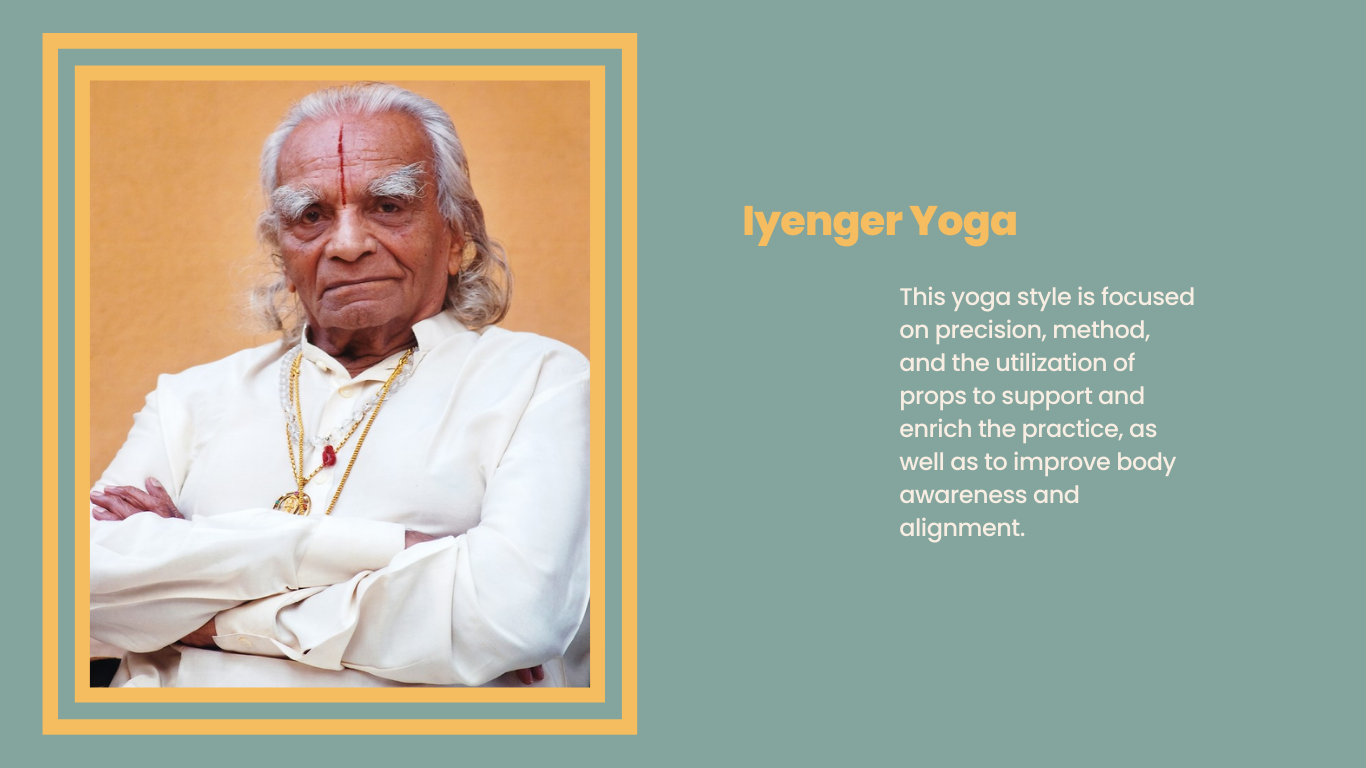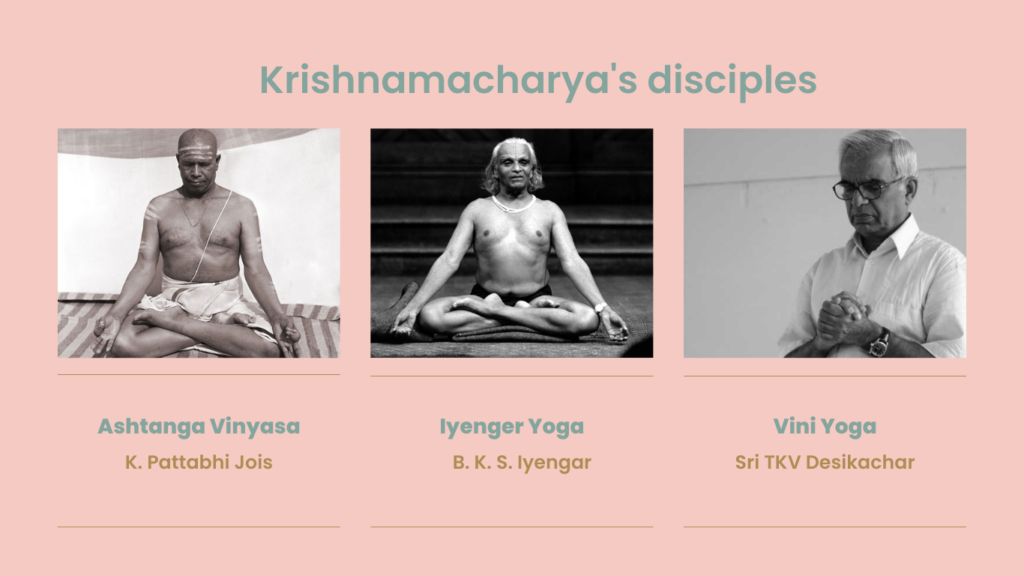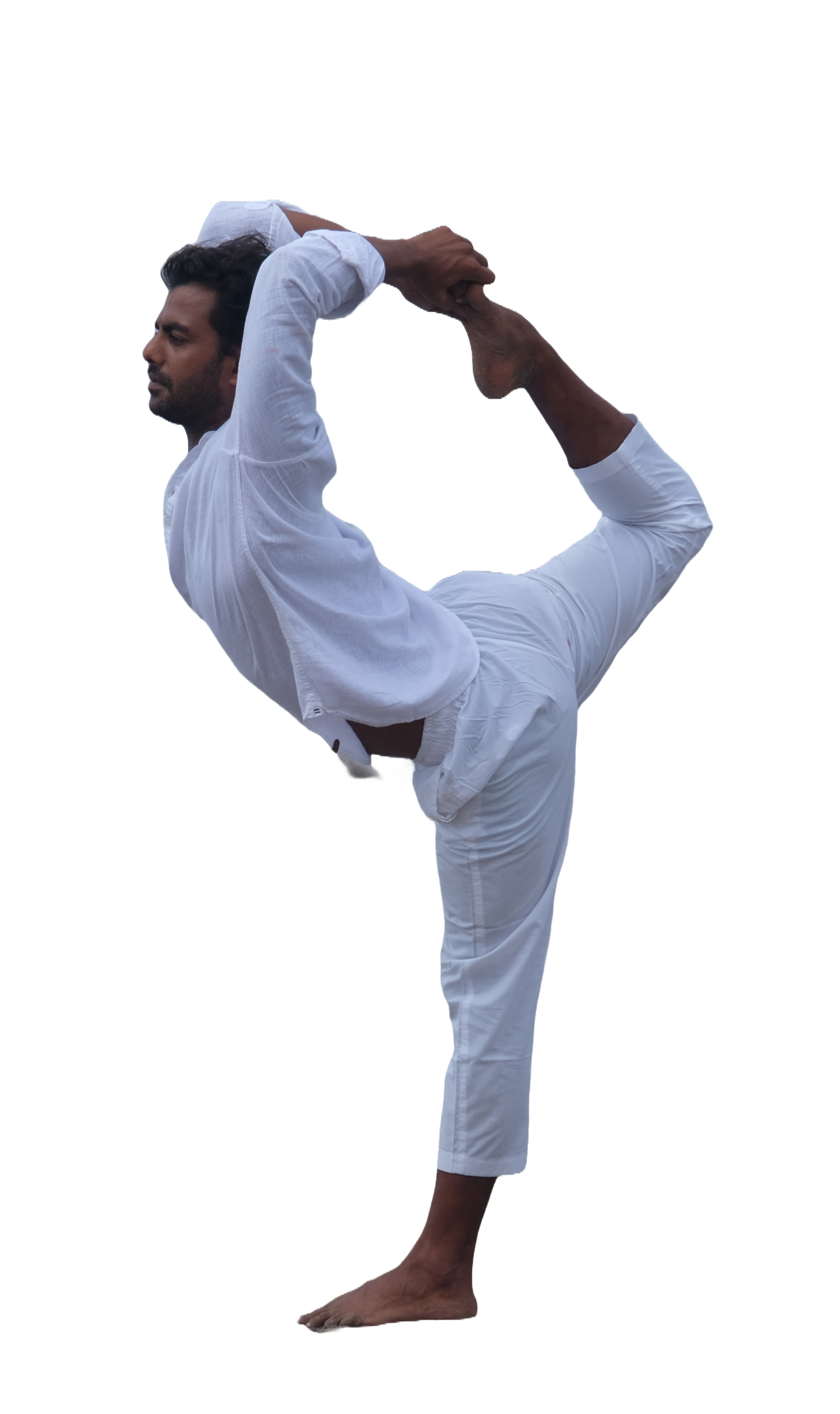Krishnamacharya, a yogi of the 20th century, played an important role in reviving and popularizing the practice of yoga. Known as the “father of modern yoga,” he trained numerous students who went on to become influential teachers in their own right. Among his notable disciples were B.K.S. Iyengar, T.K.V. Desikachar, and K. Pattabhi Jois.

B.K.S. Iyengar, born in 1918, was known for his meticulous attention to alignment and the use of props in yoga practice. He emphasized precision and detail, believing that proper alignment could bring about physical and mental balance. His style, now known as Iyengar Yoga, became renowned worldwide for its focus on holding postures for extended periods, with a strong emphasis on the use of props such as blocks, straps, and bolsters.
T.K.V. Desikachar, Krishnamacharya’s son, dedicated his life to spreading the teachings of his father. He developed a therapeutic approach to yoga known as Viniyoga, which tailored the practice to the individual needs of each student. Desikachar believed that yoga should be adapted to suit the practitioner, rather than forcing the practitioner to fit into a particular style or sequence. He emphasized the importance of breath and movement coordination, using breath as a tool to deepen the experience of yoga postures.
K. Pattabhi Jois, born in 1915, popularized the dynamic style of yoga known as Ashtanga Yoga. Under the guidance of Krishnamacharya, Jois developed a structured and vigorous practice consisting of a set sequence of postures linked by breath and movement. Ashtanga Yoga gained recognition for its physically demanding nature, with a primary series that progressively builds strength, flexibility, and focus. Jois emphasized the concept of “practice, practice, practice,” and his teachings attracted students from all over the world.
These three students of Krishnamacharya—B.K.S. Iyengar, T.K.V. Desikachar, and K. Pattabhi Jois—played significant roles in shaping the modern yoga landscape. Each developed their own unique style and approach to yoga, enriching the practice and making it accessible to a wider audience.
Iyengar Yoga

Iyengar Yoga is a style of yoga that was developed by B.K.S. Iyengar, an influential yoga teacher from India. This yoga style is focused on precision, method, and the utilization of props to support and enrich the practice, as well as to improve body awareness and alignment.
The emphasis in Iyengar Yoga is on accurate execution and proper alignment of yoga poses (asanas). The aim is to develop stability, strength, and balance in the body through careful attention to alignment. Props like blocks, straps, bolsters, and chairs are frequently used to assist practitioners in achieving correct alignment and exploring the full potential of each posture.
Prolonged pose holding is a distinctive aspect of Iyengar Yoga. In this style, poses are typically maintained for extended periods (several minutes), allowing practitioners to delve deeper into the experience and explore the subtleties of each posture. These extended holds aid in building strength, flexibility, endurance, and cultivating a focused and meditative state of mind.
The sequencing and progression of poses are also emphasized in Iyengar Yoga. Poses are carefully sequenced to create a logical progression that prepares the body for more challenging asanas. The practice often begins with standing poses and progresses to seated poses, inversions, and backbends. This systematic approach ensures steady progress in the practice.
Props are integral to Iyengar Yoga and play a crucial role in this style. They provide support, enhance alignment, and make poses accessible to individuals with limited flexibility or physical limitations. Props assist practitioners in finding correct alignment, deepening their pose experience, and preventing strain or injury.
Iyengar Yoga has gained recognition for its therapeutic benefits due to its focus on precision, alignment, and the use of props. It is frequently used as a therapeutic tool to address specific physical conditions or injuries. The practice can improve posture, alleviate chronic pain, enhance mobility, and promote overall well-being.
Iyengar Yoga is suitable for practitioners of all levels, ranging from beginners to experienced yogis. Its methodical approach and attention to detail make it a popular choice for individuals seeking a disciplined and mindful practice that nurtures both the body and mind.
Vini Yoga

Viniyoga is a style of yoga that focuses on individualized and therapeutic practices tailored to meet the specific needs and capabilities of each student. It was developed by T.K.V. Desikachar.
Viniyoga places great importance on adapting the practice to suit the unique requirements of each individual. The practice is designed to be accessible to people of all ages, physical conditions, and fitness levels. It recognizes that each person’s body, breath, and mind are unique, and therefore, the practice is adapted to meet their specific needs.
The emphasis in Viniyoga is on the integration of breath and movement. The practice involves conscious and controlled breathing (pranayama) synchronized with a series of carefully selected and modified yoga postures (asanas). The breath serves as a guide for movement, allowing for a deeper connection between body, breath, and mind.
In Viniyoga, the sequences are designed to flow smoothly and gradually, with an emphasis on stability and gradual progression. The postures are often held for shorter durations compared to other styles of yoga, allowing for focused attention and exploration of alignment, breath, and subtle sensations.
One of the key aspects of Viniyoga is its therapeutic approach. Viniyoga teachers are trained to adapt and modify the practice to address specific physical conditions, injuries, or limitations. A Viniyoga teacher would offer each student different modifications tailored to the root cause of their problem. The practice includes the use of props, such as blankets, blocks, or straps, to support and assist students in achieving proper alignment and comfort.
Viniyoga also emphasizes the integration of yoga into daily life. It encourages students to apply the principles of yoga, such as breath awareness, relaxation techniques, and meditation, in their everyday activities to promote balance, stress reduction, and overall well-being.
The practice of Viniyoga is guided by the principle of “viniyoga,” which means “appropriate application” or “adaptation.” It emphasizes the importance of a personalized approach, honoring the individual’s abilities, limitations, and goals. This individualized approach makes Viniyoga suitable for students seeking a practice that addresses their unique needs and students with specific health issues as the aspect of Yoga therapy is a key aspect of this Yoga style.
Ashtanga Vinyasa

Ashtanga Yoga is a dynamic and physically demanding style of yoga that follows a specific sequence of postures. It was developed by Sri K. Pattabhi Jois and is often referred to as the “Eight Limb Yoga” due to its focus on the eight limbs outlined by Patanjali’s Yoga Sutras.
The practice of Ashtanga Yoga involves a set sequence of postures that are performed in a continuous and flowing manner. It is characterized by its vigorous and challenging nature, with an emphasis on strength, flexibility, and breath control.
The Ashtanga Yoga sequence consists of six series, each with a specific focus and difficulty level. The Primary Series (Yoga Chikitsa) is the foundational series and is designed to detoxify and align the body. The Intermediate Series (Nadi Shodhana) focuses on purifying the nervous system, while the Advanced Series (Sthira Bhaga) progresses to more advanced poses and spiritual exploration.
In Ashtanga Yoga, the practice follows a specific breath and movement synchronization known as “vinyasa.” Each movement is linked with a specific breath, and the transition between poses is accompanied by a flowing and controlled breath. This continuous and rhythmic flow generates internal heat, purifies the body, and creates a moving meditation.
Traditionally, Ashtanga Yoga is taught in a Mysore-style class, where students practice independently within a group setting, following their individual pace and progression. The teacher provides individualized guidance, adjustments, and assistance as needed.
Ashtanga Yoga is a physically demanding practice that builds strength, flexibility, and endurance. It challenges the body and mind, cultivating discipline, focus, and resilience.
Ashtanga Yoga is often associated with its physical aspects only, as it is a vigorous practice that quickly improves strength and flexibility. However, breath and Drishti (focus) play an important role in this Yoga practice. Ujjayi breath is used throughout the practice and each posture has a fixed gazing point, e.g., the tip of the nose or the big toe. Ujjayi breathing helps to increase the heat, improving the detoxification process of the practice. Both, the Drishti’s and the controlled breathing help to anchor the attention in the present moment, resulting in the meditative character of the Ashtanga Vinyasa practice.
Ashtanga Yoga is suitable for individuals with a moderate level of physical fitness and a desire for a structured and disciplined practice. The repeating nature of the practice helps to get into a state of moving meditation quickly. By practicing Mysore style Ashtanga Yoga is also an ideal practice for Yoga beginners, as strength and flexibility will be built up gradually and completely based on the practitioners’ abilities. Step-by-step you will learn the sequence and can observe how your body and mind change.
Learn more about our Yoga teacher training in Bali!
If you would like to deepen your understanding and practice of Ashtanga Vinyasa Yoga, we have a great opportunity for you. Join our 100-hour Ashtanga Vinyasa Yoga teacher training, where you will immerse yourself in the traditions and dynamic sequences of this powerful yoga style. Whether you dream of becoming a yoga teacher or simply want to deepen your personal practice, this Ashtanga Yoga training is the perfect course to learn more about this Yoga style and to experience the benefits first hand.
But the journey doesn’t end there. For yoga teachers looking to expand their expertise and refine their teaching skills, we offer an advanced 300 hour Yoga teacher training in Germany with the focus on Ashtanga Vinyasa and arm balancing asanas. In this 300 h Yoga course we explore advanced asanas, sequencing principles, philosophy, and the art of effective instruction.


